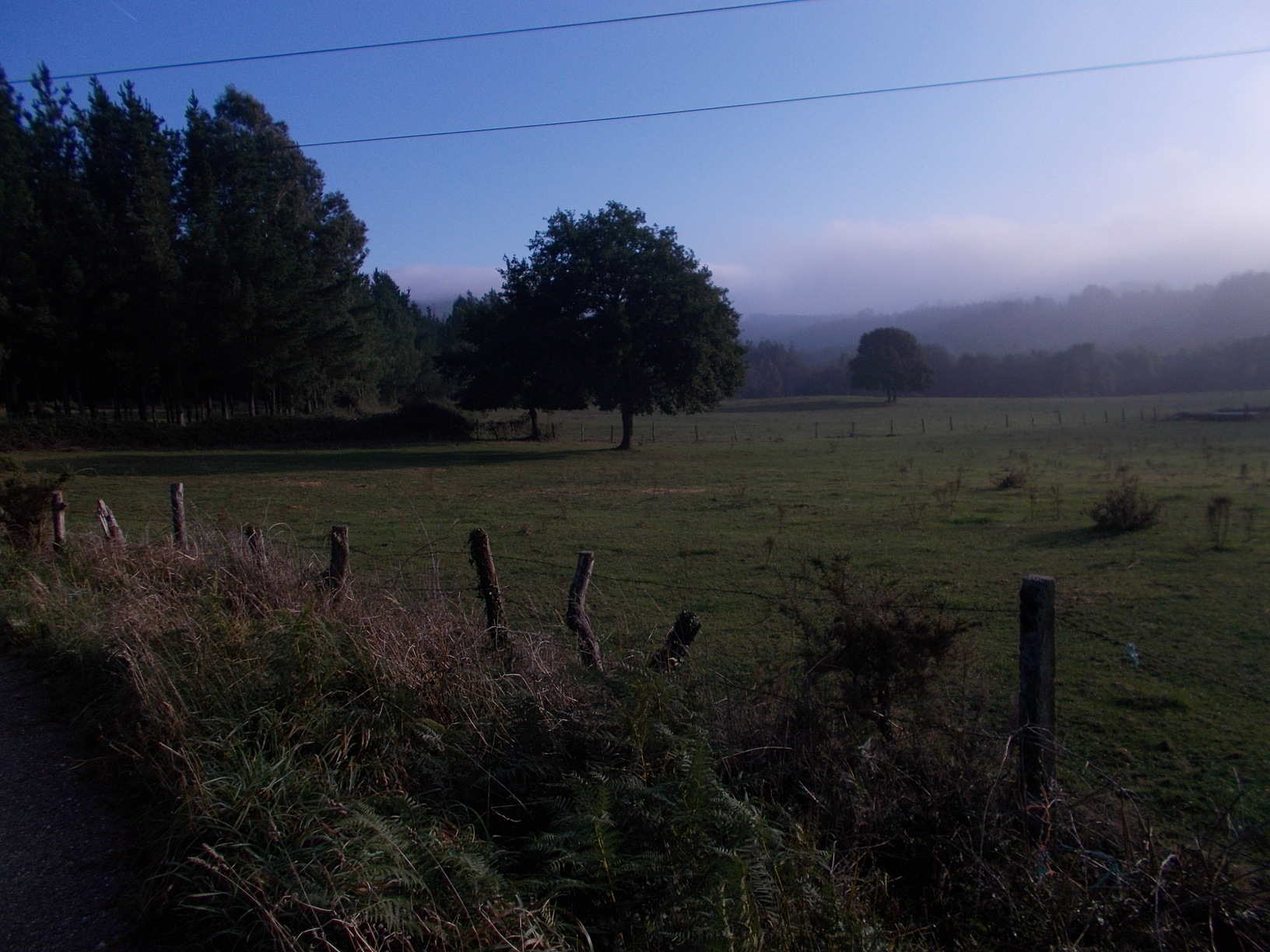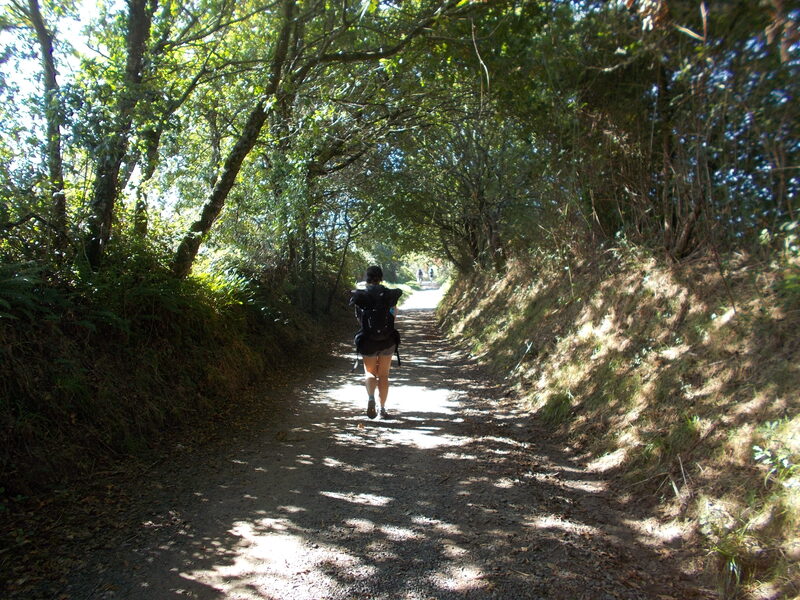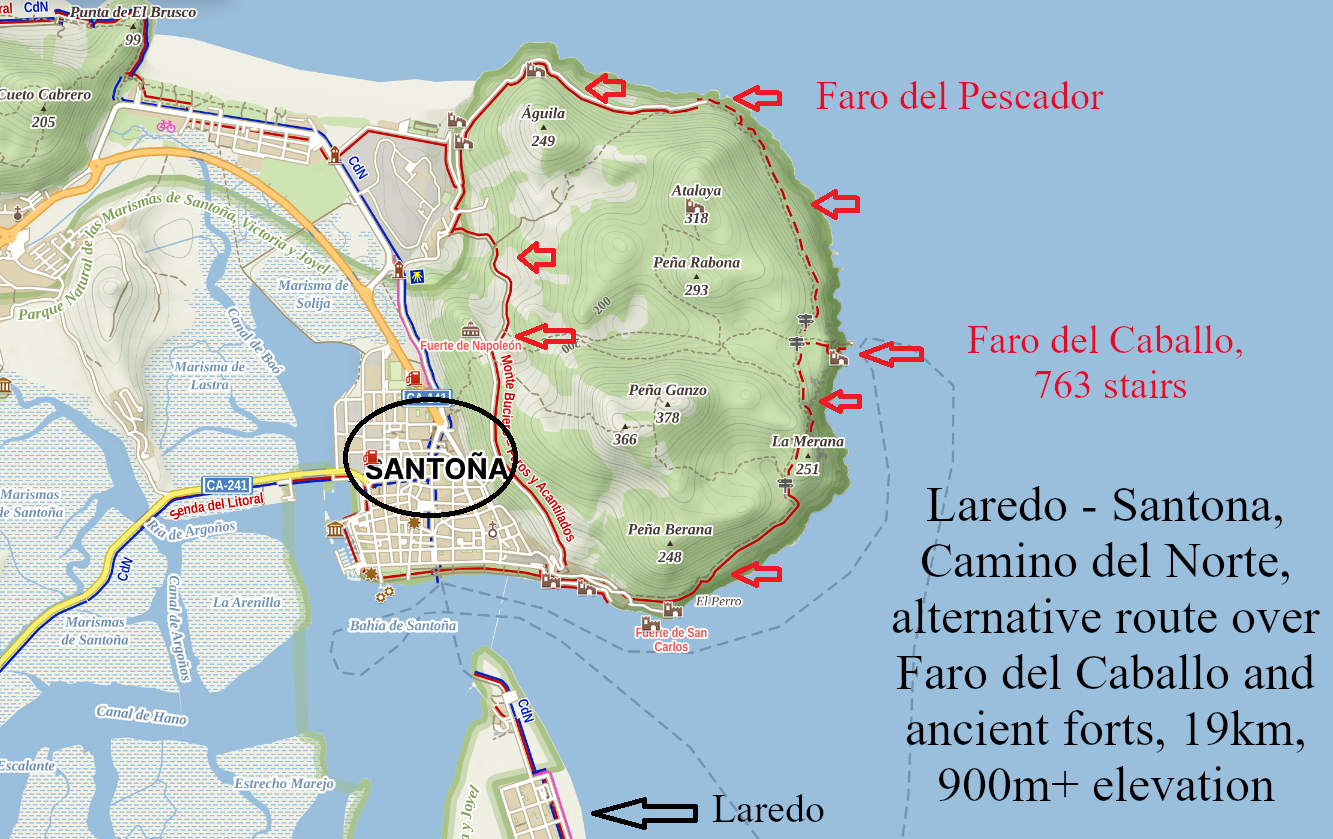 – Illustrative map for the circuit, pointing out lighthouses, ancient forts, and other spots worth seeing. For an online map click here.
– Illustrative map for the circuit, pointing out lighthouses, ancient forts, and other spots worth seeing. For an online map click here.
Basic Details
- Starting point: Convento de las Trinitarias, Laredo (convent, the only pilgrim albergue in Laredo and a place where most pilgrims stay in the town).
- Ending point: The city center of Santona (with a youth hostel and other accommodation options).
- Availability of alternative routes: This is an alternative route, and one that only 1 out of each 100 pilgrims takes. It takes you to a spectacular lighthouse “Faro de Caballo”, but also to another nice lighthouse (Faro de Pescador), ancient forts, and overall it is a wonderful circuit worth walking. To reach the Faro de Caballo lighthouse you’ll descend 763 stairs cut in stones, and that’s a real penance for every devoted pilgrim :). But even if you’re not catholic or devoted to anything in any means, it is a magical place definitely worth the effort and the detour.
- Distance: 19 km (download GPS here).
- Elevation difference: +740m, -750m
- Difficulty score: 4/5 (it isn’t long, but the descent and ascent of the lighthouse can take a lot of energy out of you…)
- Beauty score: 5/5
- Terrain/asphalt: 40%/60%
Elevation profile for the route
 – The black line in the middle of the chart is the descent and ascent of 763 stairs leading to the Faro de Caballo. The maximum gradient our chart shows is 18%, which is honestly steep enough, but the real gradient for this part is even higher (above 20%). As you can see, you’ll have a few more climbs on your way, some of them relatively steep.
– The black line in the middle of the chart is the descent and ascent of 763 stairs leading to the Faro de Caballo. The maximum gradient our chart shows is 18%, which is honestly steep enough, but the real gradient for this part is even higher (above 20%). As you can see, you’ll have a few more climbs on your way, some of them relatively steep.
Advanced info about the stage
- Trail marking: Not very good, but you do not really have a chance of getting lost, once you are on a right trail. It circumvent the mountain of Santona, so you always have the ocean at your right hand while moving forward. The only point that is easily missed is the descend to the faro (the lighthouse). There’s a small pointer and also a sign on a tree saying “763 escaleras”, which means 763 stairs. You need to turn right from there and after a short flat section the descent starts. The stairs are almost endless, and so is the beauty of the views they offer to each pilgrim who decides that Camino isn’t only about rushing to Santiago, but also about visiting some places along the coast that are worth visiting… If you want to make sure you don’t miss the Faro, you can always follow our GPS file, or get a good mapping application and watch your location on the map.
- Natural places worth seeing: The entire circuit is beautiful, especially after the first ascent. You pass several viewpoints of cliffs, forts, and other things that are worth taking a break for, and enjoying the view. The highlight though is definitely the zone of the Faro de Caballo, as you can see on a video we made for you in the zone:
- Historical, architectural, and culinary places worth seeing: Let’s start with a culinary treat this time. The tuna fish of Santona (bonito de Santona) is renowned in entire Cantabria and beyond. It is typically served with a tomato sauce, and if you eat fish, it is a must try! If you’re a fish lover and are on the Camino for a culinary experience also, it is another reason to do this circuit and sleep in Santona, so in the evening you can head to one of the local restaurants and eat the local specialty. Speaking about history and architecture, you can enjoy the ancient forts (dating back to 17th century, when the French occupied Santona). Some are visible directly from the trail, and to some you’ll have to make a detour (just follow the signs). The two forts in best condition (most are actually just ruins) are the Fuerte de Napoleon, and the Fuerte de San Carlos. You can read more about these forts and see some pictures on a Wikipedia page dedicated to them.
- Camping/bivouac options on this stage: In theory, you can camp/bivouac on a small plateau (concrete) right at the Faro de Caballo. Nobody is going to come there in the middle of the night, and the place is quite magical. However, bear in mind that this is an isolated place right at the edge of the ocean, and a night there can give one strange feelings and perhaps a nightmare or two :). You can also try taking one of the side trails leading up the mountain, and bivouac or camp near one of the ruins of the forts at the top, the Fuerte Atalaya. I saw the trail leading there but didn’t go there, hence I cannot say in what condition it is (but based on Google satellite images and some mapping data, it looks like a decent flat spot, with a bit of open space to pitch a tent). For the less adventurous campers, you can end your day in an organized camping at the edge of the beach of Berria:
- Camping Playa de Berria (Santona): Right on the trail, great surfing beach, old facilities, prison & graveyard in the neighborhood (yeah, a strange place for a camping, isn’t it?), price very reasonable (one of the least expensive camping places on the entire camino).
- Dog friendly score: 4/5. The circuit is really nice for dogs, with both open and shaded places, and a terrain a typical dog will enjoy walking on. If your dog is very small though, or struggles with stair climbing, I’d rather avoid the descend to the lighthouse “Faro de Caballo”. Also keep in mind that there aren’t any water fountains on the circuit, and while you may pass through some puddles where your beloved companion can drink water and take some refreshments, this isn’t guaranteed in summer, and you better take enough water for the dog.
- Special remarks: To get from Laredo to Santona you have to take a boat. The first boat leaves at 9am (something to take into consideration) and the last one at 6pm. The price is 2.50 euro. I say it isn’t a big deal, since the circuit isn’t that long, and you do not need to start super early to complete it at a reasonable hour. Having said that, it is good knowing this so you do not arrive to an abandoned port at 7am in the morning, having to wait for two hours for the boat service to start…
Pictures from the stage
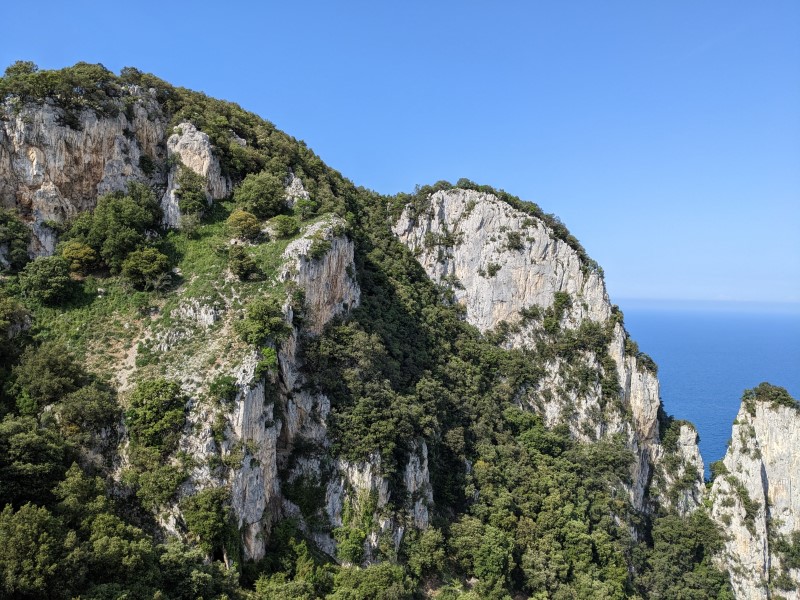 – Views of the small yet beautiful mountain complex of Pena Berana, Pena Ganzo, Pena Rabona and Atalaya (ruins of the ancient fort) will accompany you on this walk.
– Views of the small yet beautiful mountain complex of Pena Berana, Pena Ganzo, Pena Rabona and Atalaya (ruins of the ancient fort) will accompany you on this walk.

– Good viewpoints are often secured by wooden railings, so you do not fall over the cliffs while marveling at the beauty below you (or while taking a selfie :))
 – Cliffs, trees, blue ocean and a lonely bird above the water. What more can one wish for when trying to make a good picture?
– Cliffs, trees, blue ocean and a lonely bird above the water. What more can one wish for when trying to make a good picture?
 – This is how the stairs look like. As you for sure know, on the picture things never look as steep as they really are 🙂
– This is how the stairs look like. As you for sure know, on the picture things never look as steep as they really are 🙂
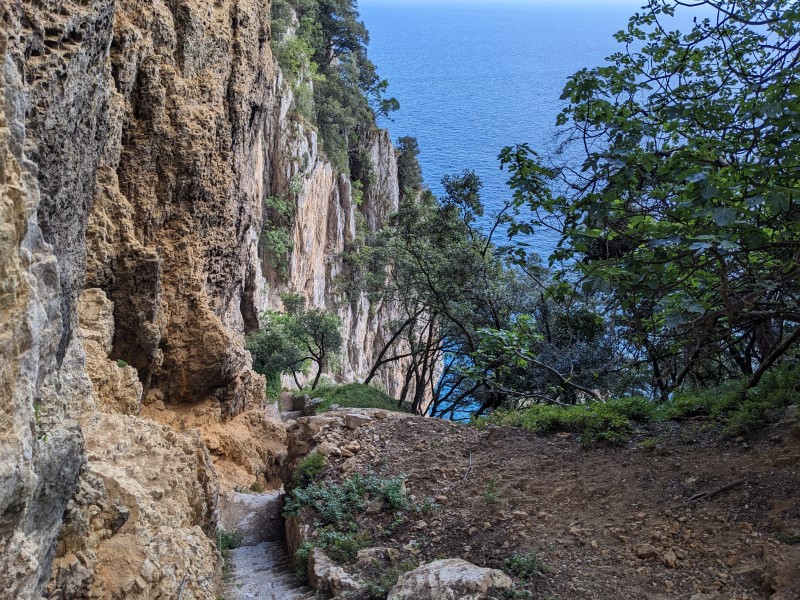 – Another peak at the stairs descending to the Faro de Caballo and the amazing scenery all around.
– Another peak at the stairs descending to the Faro de Caballo and the amazing scenery all around.

– Stairs one more time…. There are 763 of them, so one can make a lot of pictures.
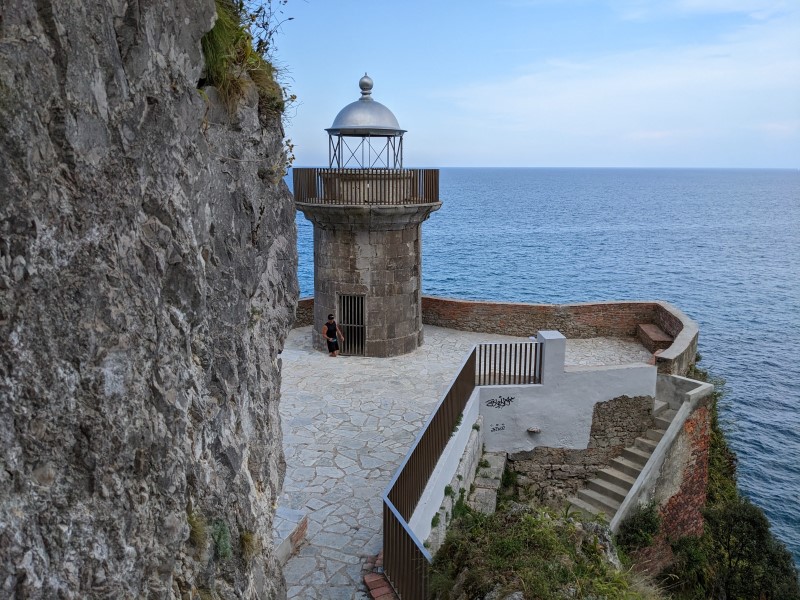 – Faro de Caballo, one of the most isolated lighthouses in entire Spain.
– Faro de Caballo, one of the most isolated lighthouses in entire Spain.
Few tips at the end
- Take enough water with you. There aren’t any restaurants or bars on the circuit, and you won’t find fountains of drinking water either (though the locals may know about one or two such, the trail doesn’t pass by any). The circuit itself has “only” 12 kilometers (the rest of the walk is flat), but with going up and down several times and with having a heavy backpack, it can easily take you 5-6 hours. Keep it on your mind when doing your planning for the day.
Next/Previous Stage
- Next stage: Camino del Norte stage no. 10, Guemes – Santander
- Previous stage: Camino del Norte, stage no. 8, Onton – Laredo
- Official Camino route for this stage: Camino del Norte stage no. 9 – Laredo – Guemes.
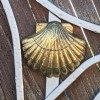



![Ultralight Packing List for Camino de Santiago [2025 Edition]](https://caminolovers.com/wp-content/uploads/2022/03/altra-shoes-640-x-480.jpg)

